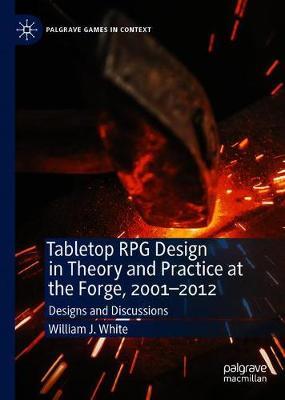I’m on a study project to improve my understanding of roleplaying games. To this end, I already have two reading projects, A Game Per Year and An Adventure Per Year. This is the third, with the goal of reading or playing 52 games made in the last few years. Originally I considered making this “A New RPG Per Week” and that’s where the number 52 comes from, even though a weekly schedule is probably not within my abilities.

When the community of experimental roleplaying design organized around the Forge discussion forum emerged in the early 2000s, I was peripherally aware of it but couldn’t really get into the games. In the following years, there was an active Forge scene in Finland organized around the publisher Arkkikivi. I tried to engage with it in my capacity as the editor-in-chief of the roleplaying magazine Roolipelaaja but unfortunately my relationship with these games was superficial.
During this reading project, I’ve gained a new appreciation for Forge games. Their innovations and ideas appear in a very good light when you read roleplaying games year by year, emerging into the Forge era from earlier periods of roleplaying publishing.
Unfortunately, the thinking behind Forge games has remained elusive and hard to approach. Thankfully, it’s not quite as hostile as the “go read the threads” era of the 2000s but nevertheless opaque because information is inaccessible and hard to locate. One of the rare and desperately needed early treatments of Forge theory opening it up for outsiders was written by Emily Care Boss in 2008 and published in the article collection Playground Worlds.
I can say without exaggeration that William J. White’s Tabletop RPG Design in Theory and Practice at the Forge, 2001-2012 is a book I’ve been waiting for fifteen years. Finally a comprehensive treatment of the Forge and what it was all about!
The reason I’m writing about it here is that the book ends with a Forge-style game called Designs & Discussions which seeks to simulate the experience of participating in the Forge in its heyday. Today, I had the opportunity to play this game and attempt to immerse myself into the exotic culture of Forge designers of the mid-2000’s.
Naturally, roleplaying games can only give an approximation of a lived experience, whatever it was. However, Designs & Discussions is pretty clever with its mechanics and the way they sketch out the parameters of the life of a Forge participant. My favorite phase of the game was posting to the forum where our characters, American Forge designers, seek to argue their points and advocate for their values and ideas.
Players make up projects for their characters and there’s a “rise and fall” type dynamic where the player first talks up the project to give it a better chance of success and the GM then does a reality check voiding many hard-earned advantages. In our run of the game, we rolled quite badly, with the result that our projects were largely embarrassing.
Twice, we rolled a one, leading to a kertuffle, an online spat directed at the unlucky character. These eat up resources very fast, wearing away at the characters and their ability to make anything.
A key stat is Drive. As Drive is eroded by kertuffles and other things, it can reach zero at which point the designer burns out and leaves the scene.